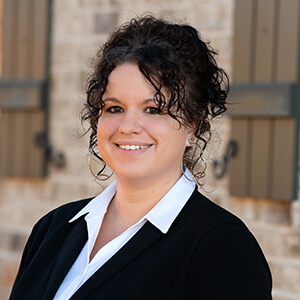Putting Your Team First, Not the Patient

Is it easier for me to replace a patient or an invested team member?
I walk through the front door of the office with my Starbucks cup, briefcase, and bag in hand. As I turn to open the door to the entrance to the office, just steps away, my hygienist greets me with “Morning.”
I responded with “Hey!” and noticed she was limping. The strangest limp I’ve ever seen, to the point I was feeling discomfort watching her take each step. I walked into my office, put my things down, and she crosses my field of vision again. I couldn’t bear watching her and asked, “Are you okay? Because watching you walk is hurting me.”
She let out a slight giggle and confessed she had pulled a muscle or pinched a nerve the day before. Our full-time hygienist was out for two weeks for her honeymoon, and she didn’t want to call out, leaving the office in a bind.
The Problem
How many managers or owners have been in a similar situation? Your employee was sick, hurt, etc., and they didn’t want to make the call to not come in for their shift or leave early. Did you step in on behalf of your team member or did you put the patients first?
The most common answer throughout my career was to put the patient first. I have personally rescheduled doctors’ appointments, missed school functions for my kids, rescheduled my anniversary dinner with my husband, went into work when I felt like I was on my deathbed, and the list goes on.
It’s easy to ignore your needs and passively say, “Oh gosh, I hope you’re okay. I’ll get you help so you can finish your day.” We’ve all been there. It’s as if we’ve been conditioned to put the patient and their needs first without limitations.
The Solution: Balancing Patient and Team Needs
I chose to put my hygienist first. She picked up an additional three days a week while my full-time hygienist was out, putting her other obligations to the side for the office. When I needed her the most, she stepped in without question. It was my time to be there for her. I pulled her to the side and said, “Finish your patient, I’m rescheduling your day.” She let out a sigh of relief, saying, “Thank you.”
The simple act of acknowledging her pain, her willingness to work, and choosing her well-being over the production of the day showed the team that they matter. If we can excuse a patient for canceling their appointment less than 24 hours for emergency circumstances, we can ask for the same courtesy in return. Let your team know they are more than a means to an end. As an administrator, you must look within and identify what role you play within the practice.
I’m a Human Resources Operations Manager who, amongst many other responsibilities, acts as a liaison between the doctor, employees, and patients. My number one priority is the health and wealth of the practice. The team is a key component to the success of the practice. Working with fee-for-service practices that have high standards, expectations, and clear guidelines for each person’s contribution within the organization, it’s imperative that I consistently and equally hold each team member accountable and except nothing less than greatness. At the same time, when the moment arises for me to step in for them, I take it.
When employees feel appreciated, that their contributions matter, and that their best interests are being considered, it will be expressed through their body language and attitude as they care for patients. They will strive to meet or exceed expectations. Goals will be met, and the bottom line will reap the benefits.
When you innocently and passively put employees on the back burner by shortening their lunch break to squeeze in a new patient, turning a blind eye when they are sick and struggling to make it, walking in pain as they strain to do their bare minimum, or using the philosophy of “Well, I do it so they can do it, too,” they will grow resentful of the practice. Don’t let the fear of a rescheduled patient, a lost new patient, or any situation that puts your team member in an unfavorable position become the standard in your practice.
D. Quinn Mills, Professor of Business Administration at Harvard Business School, says, “We must never forget that the most important element of any organization is the quality and performance of the people within it.” His words changed my perspective on what was important and induced self-reflection through my years in dentistry. I have given what seemed my all at times and felt it was insufficient if every patient’s needs couldn’t be met or If I fell short one day, it seemed to overshadow years of sacrifices. I strive to be the manager I wished I had and lead my practices by Mills’ words.
Take care of YOUR people. Invest, train, and grow YOUR people. Your practice depends on it.
It is easy to find a body to do a job and go home, but it is harder to find a professional passionate about their career. Changing my management style from patient-focused to employee-focused has ignited a fire within my team and myself. Ensuring work-life balance, scheduling team building events, and simply putting my team first when they need it the most have prevented my practice from suffering high turnover and the effects of the labor shortage crisis.
Times are changing, and how we manage and lead a practice must evolve with it.
About the Author

Malissa Gianfala, FAADOM, has been in the dental industry since 2010, when she began as a surgical dental assistant. She began her journey into business management in 2018. Malissa has been an AADOM member since 2019, and in 2021 she received her fellowship designation (FAADOM). She is also the president of the AADOM Gwinnet County GA Chapter. Malissa feels her greatest achievement is being a mom to four beautiful children.







